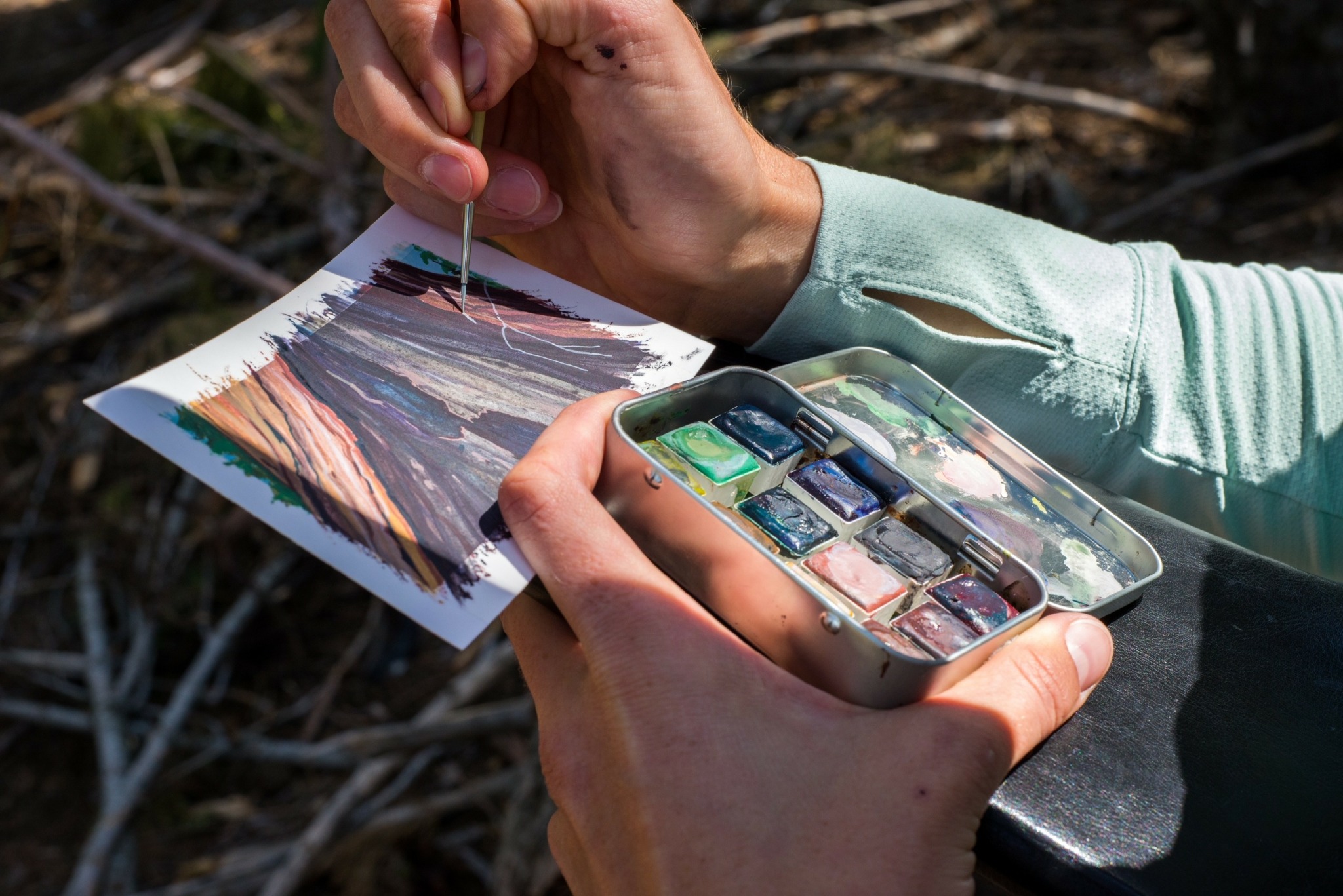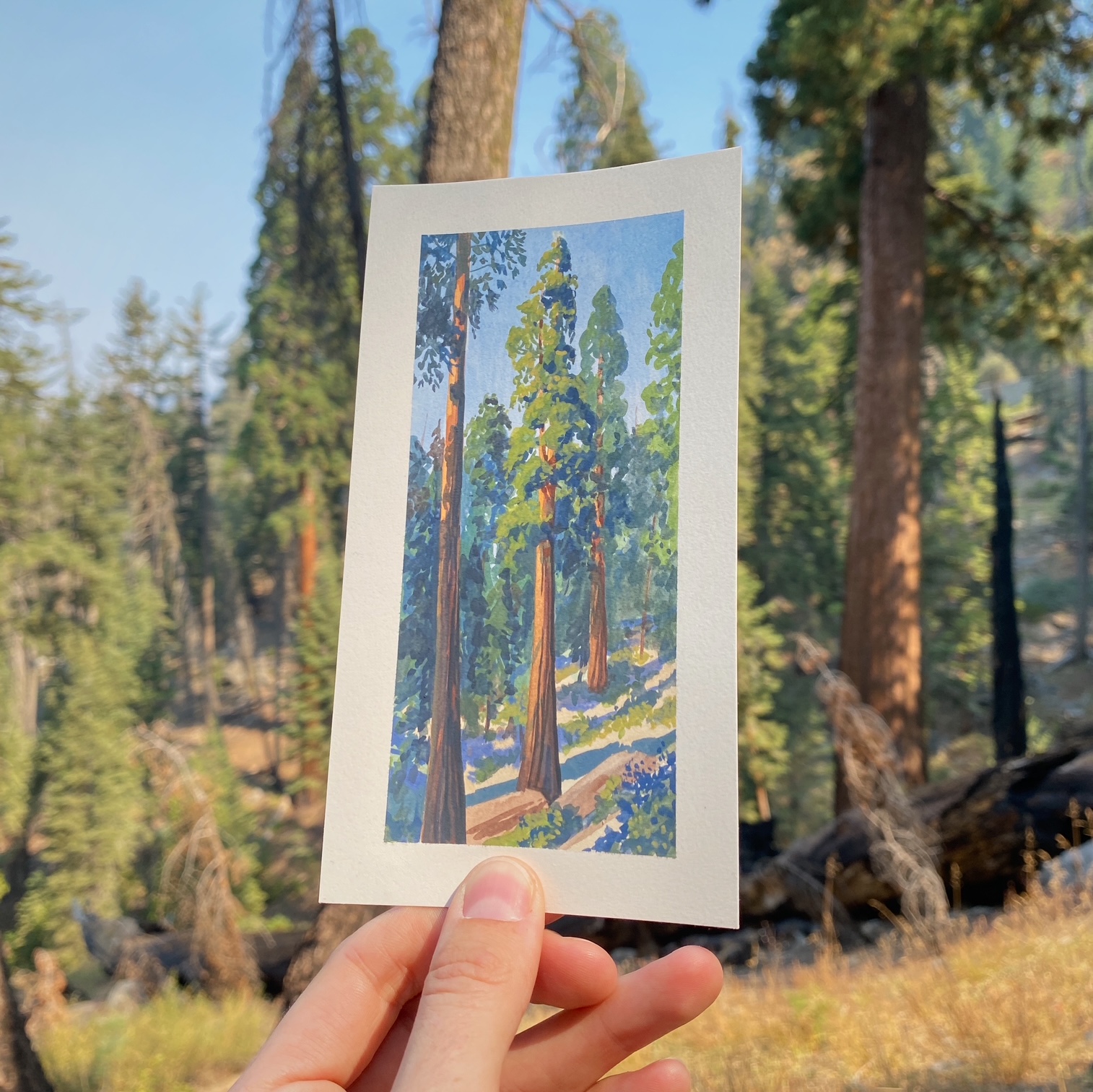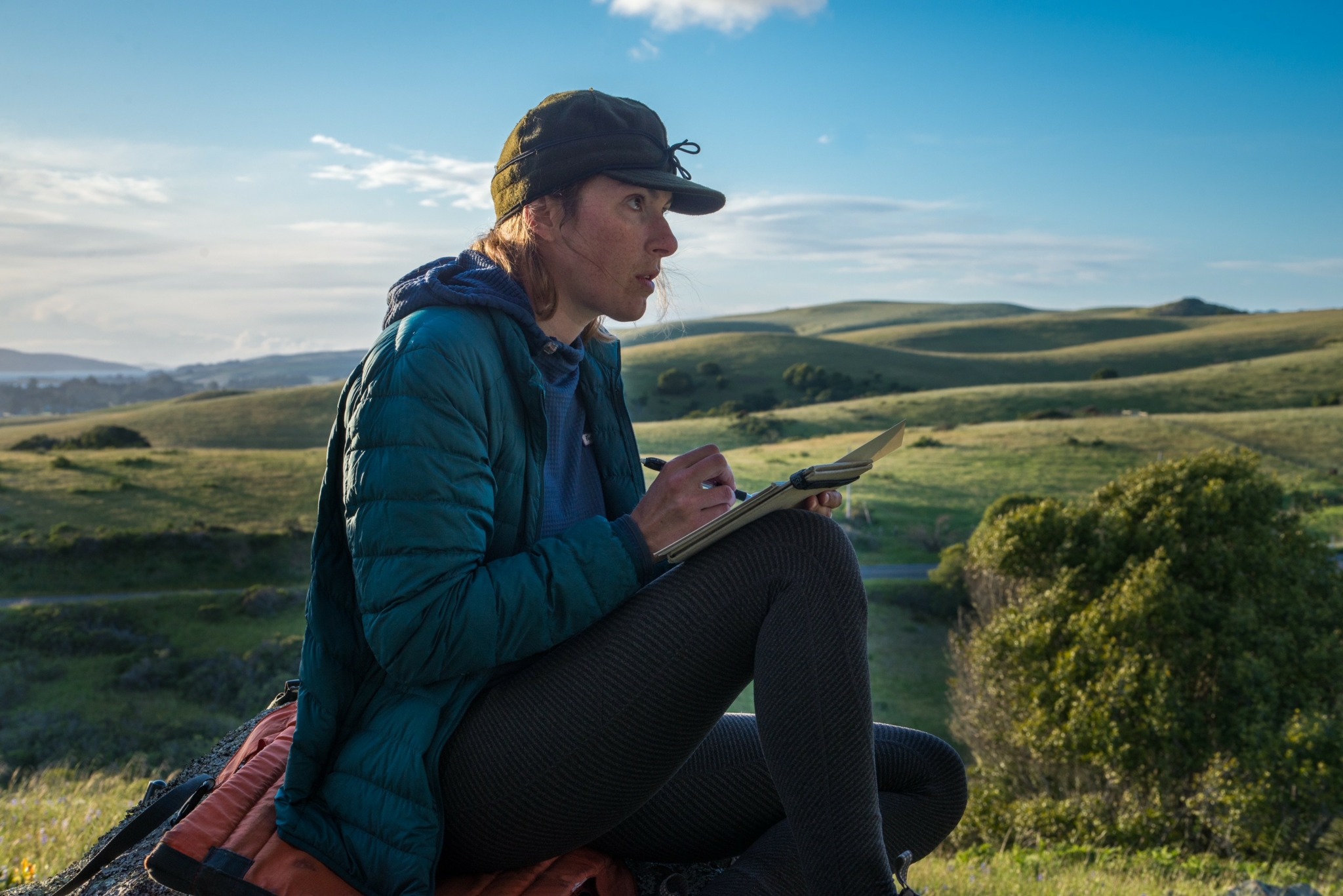We were lucky to catch up with MaryEllen Hackett recently and have shared our conversation below.
MaryEllen, appreciate you joining us today. What’s the kindest thing anyone has ever done for you?
This conversation changed my own attitude about my artwork.
When I was about 4 years post getting my BFA, I was attending an art residency in northern Vermont with about 50 other artists and writers. Most of the people there were “full time” artists, and there were more than a few who held prestigious national grants. I was very insecure, liking my own work but worrying that I was not a professional because I had a non-art day job as my primary income.
As part of the residency, all participants got 2 minutes to present about their work to the group. In your 2 minutes, images of your work from before the residency would display for 10 seconds. There was no time for details and fluff.
My paintings were small landscapes from the places I worked, documenting notable light and weather, and also many quiet views out my window. At the time, I was working half the year in National Parks, moving every 6 months. I used my art to collect pieces of these places. While I attached my experiences in these places to the paintings, those stories were invisible to the viewer. I did write some objective notes on the edges of my paintings with the location, weather, and time of day.
While watching other’s present their work I was struck by the big concepts. There were calls for social change, environmental awareness, and big stories that I honestly could not see if the artist did not tell me about them. I became insecure that my work documenting my life was not big enough and not trying to change the world enough.
When I presented, I talked about the process of my work, the time sitting out in the place, and my choice to paint where I lived. I defended the small scale as if it were my senior thesis- which was an entirely practical decision based on the size of my backpack I often carried. I mentioned my artistic influences (Lois Dodd, Will Barnett, and Rockwell Kent) and wrapped up with time to spare.
After the presentation I was feeling like the lack of big concepts meant my work came across as insignificant. Here is where we get to the kindness;
Another artist came up to me, one who made beautifully crafted wall hangings that were abstract, used wood and paint and industrial materials. Our art could not be farther apart. He said “you just gave the most honest presentation of the night.” This simple statement immediately changed my perspective on my work. I did not have to add meaning that was not there, and more importantly my art was meaningful for what it was without a statement attached to it.
The second-hand ripple effect what that I became a believer in telling people, even strangers, what I like about their work. You never know what insecurity they are dealing with, and you may help them through it.

MaryEllen, before we move on to more of these sorts of questions, can you take some time to bring our readers up to speed on you and what you do?
I am a professional landscape painter who has a day job as a first responder. Mt paintings are small landscapes, always starting from observational drawings and sketches. I sell original art, prints, and paper-goods. I am newly entering the whole-sale market. I consider myself an established artist, while going at my career as an emerging one.
I am very proud of the path I have been on the last 15 years, seeing how small actions have built into larger success and opportunities. This does not make me complacent, but I have proof of concept and know the work I put into my art career is worthwhile.
Beyond my own art practice, I work with artists who need help with application materials for art residencies, especially residencies in the National Parks. I also love to communicate with artists who need a peer opinion or a motivational speech to not quit their day job (unless they really want to) to feel like they are a successful, professional, artist. I do not have an MFA, a job in academia, or a job in the “Art World,” but I do make good money from my art, have a thriving art network, and am satisfied with the opportunities I get.

Are there any books, videos, essays or other resources that have significantly impacted your management and entrepreneurial thinking and philosophy?
While it is a little dated about the internet, I re-read Jackie Battenfield’s book “The Artists Guide: how to make a living doing what you love,” every couple of years. It was the “textbook” for a class I took in my senior year called Emerging Artist Strategies, and it holds up. It makes you think about your application materials in a practical way, and highlights networking with the attitude that existed before social media took-over, which is actually really refreshing and a good place to go in these times when winning in the social media arena seems more random and difficult.
A bonus is that the hard-copy of it has wide margins for taking notes and making to-do lists.

For you, what’s the most rewarding aspect of being a creative?
This is less the totality of the benefits, but a rewarding moment. This came to me last fall as I was having an open studio before the holidays. I am fortunate that this event is in a community with many artists, so attendees include other creatives as well as holiday shoppers. While talking to other artists I realized how lucky I was that my income to pay my bills, feed myself, and have shelter, was not tied to my art. It is not a normal perspective for an artist, but where it really demonstrated itself to me was the realization that I make better work because I do not have to part with all of it. If I truly love a piece, or it if significant personal meaning, I can afford to keep it. Many artists cannot have this luxury. It was a really freeing moment of clarity.
Contact Info:
- Website: https://HereAndFarther.com
- Instagram: @HereAndFarther
- Other: https://HereAndFarther.substack.com



